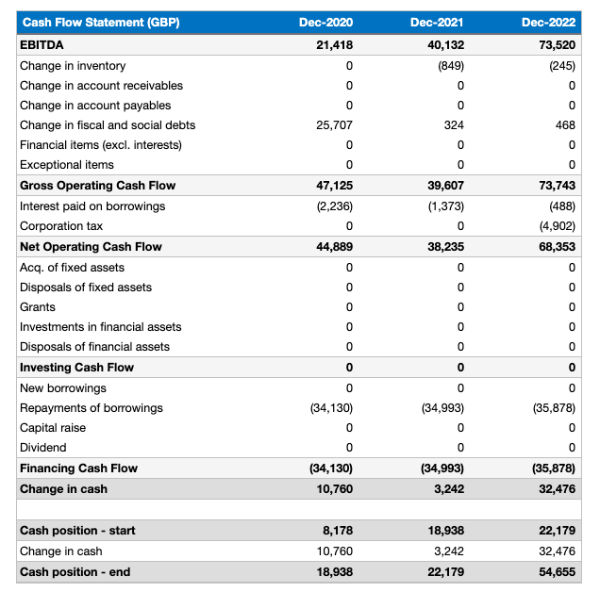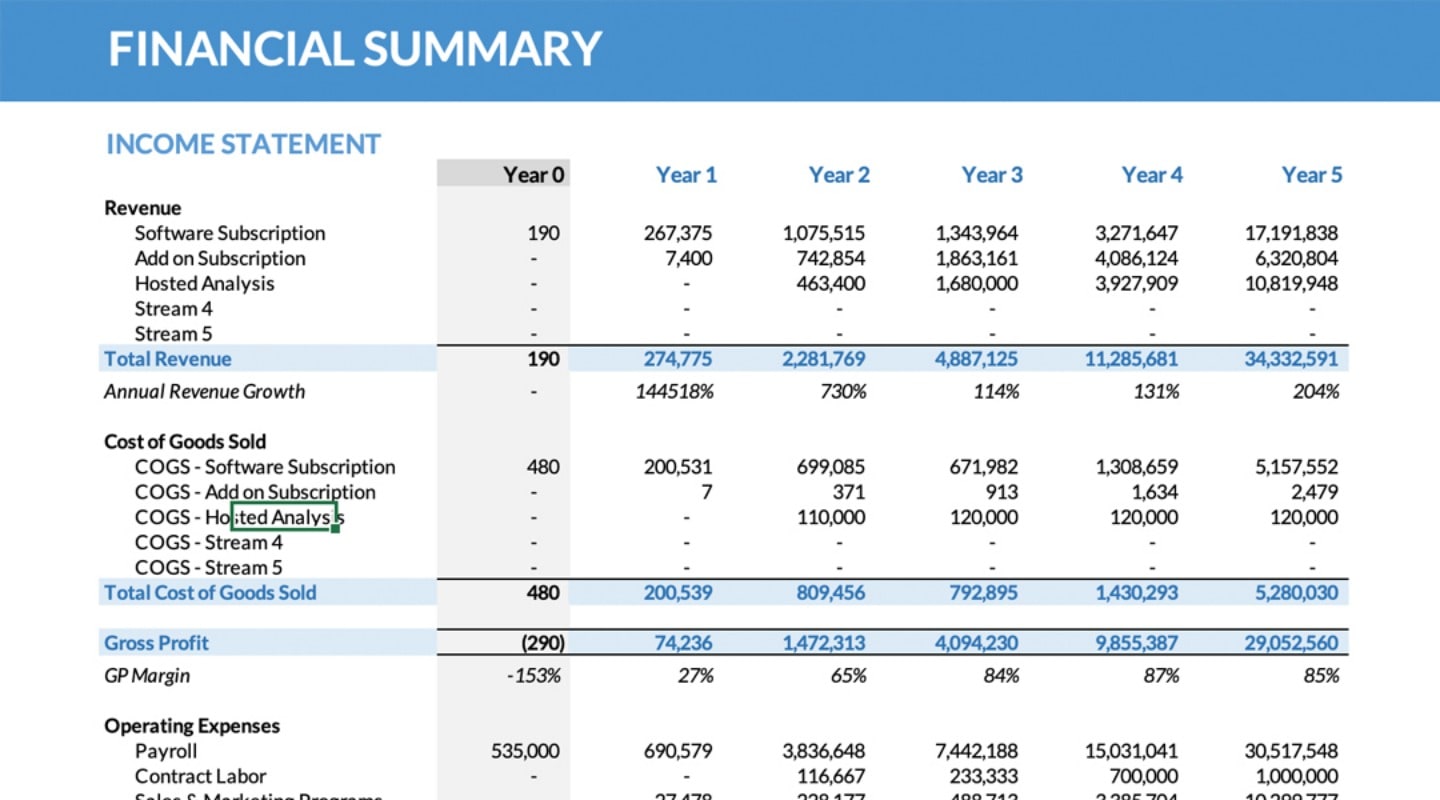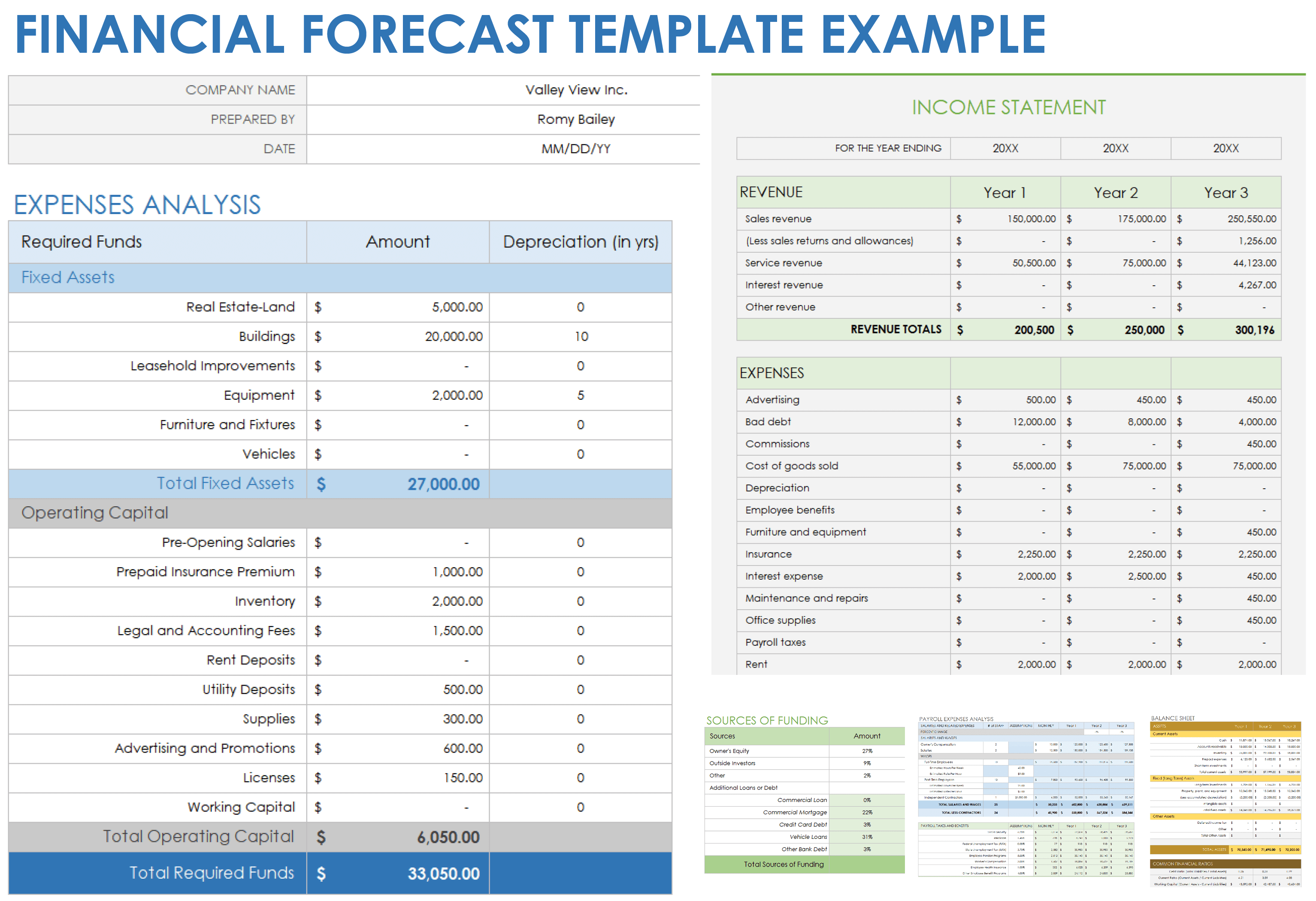Your Blueprint for Financial Forecasting Success
In today's dynamic business landscape, the ability to anticipate future financial outcomes is not merely an advantage but a fundamental necessity. This crucial discipline, known as financial forecasting, provides organizations with the foresight needed to navigate uncertainties, seize opportunities, and allocate resources effectively. Without a clear vision of what lies ahead financially, businesses operate in the dark, making reactive decisions that can jeopardize long-term stability and growth.
Effective financial forecasting empowers leaders to make informed, strategic choices, from setting realistic budgets and managing cash flow to planning for expansion and mitigating potential risks. It transforms raw data into actionable insights, enabling companies to move beyond guesswork and embrace a data-driven approach to their financial health. This proactive stance is essential for maintaining competitiveness and achieving sustainable success in an ever-evolving market.

This article will serve as your comprehensive blueprint, delving into the intricacies of financial forecasting. We will explore its core principles, highlight its multifaceted benefits, examine various methodologies, and discuss the essential components required for accurate predictions. Furthermore, we will address common challenges and outline best practices to help you build a robust forecasting framework that truly supports your strategic objectives.

What is Financial Forecasting?

At its core, financial forecasting is the process of estimating future financial outcomes for a business or project. This involves using historical data, current market conditions, and reasonable assumptions about future events to predict revenue, expenses, profits, and cash flow over a specified period. It's a forward-looking exercise designed to provide a realistic projection of a company's financial performance.

Defining Financial Forecasting
Financial forecasting is more than just guessing; it's a systematic and analytical discipline. It leverages quantitative and qualitative techniques to project the financial position of an entity, be it a small startup or a multinational corporation. The goal is to create a model that can predict future financial statements such as income statements, balance sheets, and cash flow statements, allowing businesses to anticipate their financial needs and capabilities. It helps in understanding potential liquidity issues, solvency concerns, and overall profitability trends.

The Indispensable Role of Financial Forecasting in Business
The importance of financial forecasting cannot be overstated. It acts as the backbone for almost every major business decision. For instance, without accurate forecasts, a company might overspend on inventory, leading to significant holding costs, or underspend on marketing, missing out on crucial growth opportunities. Here are some of its critical roles:

- Strategic Planning: Forecasts provide the financial context for long-term strategic goals, such as market expansion, product development, or mergers and acquisitions.
- Budgeting and Resource Allocation: They serve as the foundation for creating realistic budgets and allocating capital, personnel, and other resources efficiently.
- Performance Evaluation: Forecasts establish benchmarks against which actual performance can be measured, allowing management to identify deviations and take corrective actions.
- Risk Management: By anticipating potential shortfalls or surpluses, businesses can proactively manage risks like cash flow crises, supply chain disruptions, or market downturns.
- Investor and Stakeholder Confidence: Accurate forecasts demonstrate financial prudence and foresight, enhancing credibility with investors, lenders, and other stakeholders.
Key Benefits of Robust Financial Forecasting
Implementing a strong financial forecasting process yields a multitude of benefits that extend beyond mere numbers, permeating every aspect of an organization's operations and strategic outlook.

Enhanced Decision-Making
Forecasts provide a clear, data-driven basis for making crucial business decisions. Whether it's deciding on a new product launch, entering a new market, or undertaking a significant capital expenditure, accurate forecasts inform the potential financial impact, allowing leaders to weigh options more effectively.

Proactive Risk Management
One of the most significant advantages of effective financial forecasting is its ability to identify potential financial challenges before they escalate. By projecting future cash flows, for example, a company can foresee a liquidity crunch months in advance and take corrective measures, such as securing a line of credit or adjusting payment terms, to avoid a crisis.

Improved Resource Allocation
By understanding future revenue streams and expenditure needs, businesses can optimize the allocation of their financial capital, human resources, and operational assets. This prevents overspending in some areas while under-investing in others, ensuring that resources are deployed where they can generate the most value.
Better Strategic Planning
Financial forecasts are intrinsically linked to strategic planning. They help articulate financial targets that support strategic objectives, such as achieving a certain market share, improving profitability margins, or expanding into new territories. This alignment ensures that strategic initiatives are financially viable and sustainable.
Increased Accountability and Performance Measurement
When financial forecasts are established, they set clear financial targets. These targets become benchmarks against which individual departments and the organization as a whole can be evaluated. This fosters a culture of accountability and helps in pinpointing areas of underperformance or overperformance, facilitating targeted improvements.
Methods and Techniques in Financial Forecasting
The landscape of financial forecasting techniques is diverse, ranging from subjective qualitative approaches to sophisticated quantitative models. The choice of method largely depends on the availability of data, the time horizon of the forecast, and the desired level of accuracy.
Qualitative Forecasting Methods
These methods are typically used when historical data is scarce or unreliable, or when significant changes are anticipated that historical patterns may not capture. They rely heavily on expert judgment and subjective insights.
- Expert Opinion: Gathering insights from seasoned professionals, consultants, or industry veterans who have deep knowledge of the market and business environment.
- Delphi Method: A structured communication technique designed to elicit and refine group opinions. Experts respond to questionnaires in several rounds, with summaries of group responses provided after each round to encourage convergence of opinion.
- Market Research: Conducting surveys, interviews, and focus groups to gauge customer preferences, market demand, and competitor strategies. This is especially useful for new product introductions.
Quantitative Forecasting Methods
These methods rely on historical data and mathematical models to predict future outcomes. They are most effective when there is a significant amount of consistent historical data available and when future trends are expected to follow past patterns.
- Time Series Analysis: This involves analyzing past data points collected over a period to identify patterns, trends, seasonality, and cycles.
- Moving Averages: Calculates the average of a specific number of past data points to smooth out short-term fluctuations and highlight longer-term trends.
- Exponential Smoothing: Similar to moving averages but assigns more weight to recent observations, making it more responsive to changes.
- ARIMA (AutoRegressive Integrated Moving Average): A more advanced statistical model that accounts for the autocorrelation in a time series data.
- Regression Analysis: This statistical technique examines the relationship between a dependent variable (what you want to forecast, e.g., sales) and one or more independent variables (factors that influence it, e.g., marketing spend, economic growth).
- Linear Regression: Models the relationship as a straight line.
- Multiple Regression: Incorporates multiple independent variables to predict the dependent variable, providing a more comprehensive model.
- Econometric Models: These are complex models that integrate economic theories and statistical methods to forecast economic variables or business performance, often incorporating various macroeconomic indicators.
Choosing the Right Method
Selecting the appropriate forecasting method involves considering several factors: the availability and quality of historical data, the desired time horizon (short-term vs. long-term), the required accuracy level, and the cost and complexity of implementation. Often, a combination of qualitative and quantitative methods provides the most robust and accurate forecasts.
Essential Inputs and Components for Effective Financial Forecasting
The accuracy and reliability of any financial forecasting model are directly tied to the quality and relevance of the data inputs. A robust forecast is built upon a foundation of comprehensive and well-understood information.
Historical Financial Data
This is the bedrock of most quantitative forecasts. It includes past records of:
* Revenue: Sales trends by product, region, customer segment.
* Expenses: Cost of goods sold, operating expenses, administrative costs, marketing spend.
* Cash Flow: Operating, investing, and financing cash flows.
* Balance Sheet Items: Assets, liabilities, and equity movements.
Analyzing historical performance helps identify trends, seasonality, and cyclical patterns that are likely to repeat.
Economic Indicators
External macroeconomic factors significantly influence a company's financial performance. Incorporating these into forecasts provides a broader perspective:
* Gross Domestic Product (GDP) Growth: Indicates overall economic health and consumer spending capacity.
* Inflation Rates: Affects purchasing power, input costs, and pricing strategies.
* Interest Rates: Influences borrowing costs, investment returns, and consumer credit.
* Unemployment Rates: Reflects consumer confidence and labor market conditions.
* Exchange Rates: Crucial for businesses with international operations.
Industry Trends and Market Data
Understanding the specific industry landscape is vital:
* Market Growth Rates: How fast is the target market expanding or contracting?
* Competitor Analysis: Strategies, pricing, and market share of competitors.
* Technological Advancements: Disruptive technologies that could impact demand or operational efficiency.
* Regulatory Changes: New laws or policies that might affect business operations or costs.
* Customer Behavior: Shifting preferences, purchasing habits, and loyalty.
Operational Data
Internal operational metrics provide granular insights into the business's capacity and efficiency:
* Sales Pipeline and Lead Conversion Rates: For projecting future revenue.
* Production Capacity and Utilization: For understanding output limits and associated costs.
* Inventory Levels and Turnover: Impacts working capital and storage costs.
* Employee Productivity and Headcount Plans: Influences labor costs.
* Customer Acquisition Cost (CAC) and Lifetime Value (LTV): Important for marketing and sales forecasts.
Management Assumptions and Strategic Initiatives
While data is crucial, forecasts also rely on management's informed assumptions about future actions and their potential impact:
* Pricing Strategies: Expected changes in product or service pricing.
* Marketing and Sales Initiatives: Planned campaigns and their anticipated effect on demand.
* New Product Launches or Market Entries: Expected revenue and cost implications.
* Capital Expenditure Plans: Investments in new equipment, facilities, or technology.
* Cost Reduction Programs: Anticipated savings from efficiency improvements.
These assumptions need to be clearly documented and regularly reviewed for validity.
Overcoming Challenges in Financial Forecasting
Despite its undeniable value, financial forecasting is not without its hurdles. Businesses often encounter various challenges that can impact the accuracy and reliability of their projections.
Data Accuracy and Availability
A primary challenge is ensuring the accuracy and completeness of historical data. Inconsistent data entry, fragmented systems, or missing information can lead to flawed forecasts. Collecting and integrating data from disparate sources (ERP, CRM, accounting software) can also be complex.
Volatility and Uncertainty
The modern business environment is characterized by rapid change. Economic downturns, geopolitical events, technological disruptions, and sudden shifts in consumer behavior (as seen during global pandemics) can make predicting the future exceptionally difficult. High volatility can render even robust models less effective.
Bias and Assumptions
Forecasts are built on assumptions, and these can be subject to human bias. Optimism bias can lead to overly positive revenue projections, while confirmation bias might lead forecasters to only seek information that supports their preconceived notions. Moreover, unstated or unrealistic assumptions can severely undermine the forecast's credibility.
Integration Issues
For a forecast to be truly valuable, it needs to be integrated across different departments. Siloed information and a lack of collaboration between finance, sales, marketing, and operations can lead to disjointed forecasts that don't reflect the company's holistic reality or strategic direction.
Lack of Expertise and Resources
Developing and maintaining sophisticated forecasting models requires specialized skills in finance, statistics, and data analysis. Smaller businesses or those without dedicated finance teams might struggle to allocate the necessary human resources or invest in the right software tools.
Best Practices for Accurate and Actionable Financial Forecasting
To maximize the benefits of financial forecasting and mitigate the challenges, adopting a disciplined approach and adhering to certain best practices is crucial.
Start with Clear Objectives
Before diving into numbers, define what the forecast is for. Is it for budgeting, capital allocation, strategic planning, or risk management? Clear objectives will dictate the level of detail, the time horizon, and the appropriate methods to use for your financial forecasting.
Involve Key Stakeholders
Forecasting should not be an isolated finance department activity. Engage sales, marketing, operations, and senior management. Their insights into market conditions, operational capacities, and strategic initiatives are invaluable for creating more realistic and buy-in-friendly forecasts.
Use Multiple Scenarios (Scenario Planning)
Given inherent uncertainties, relying on a single "most likely" forecast is risky. Develop best-case, worst-case, and most-likely scenarios. This helps in understanding the range of potential outcomes and preparing contingency plans for adverse events, enhancing resilience.
Regularly Review and Adjust
Financial forecasts are living documents, not static predictions. They should be reviewed and updated regularly (e.g., monthly or quarterly) to incorporate new information, reflect changes in market conditions, or adjust for deviations from past predictions. This iterative process improves accuracy over time.
Leverage Technology
Modern financial planning and analysis (FP&A) software, business intelligence (BI) tools, and specialized forecasting platforms can automate data collection, streamline model building, and enhance reporting capabilities. This frees up finance professionals to focus on analysis rather than data manipulation.
Focus on Key Drivers
Identify the handful of variables that have the most significant impact on your financial outcomes (e.g., customer acquisition cost, average transaction value, production volume). Focusing on accurately predicting these key drivers will lead to more robust forecasts than getting bogged down in minor details.
Document Assumptions
Clearly document all assumptions made during the forecasting process. This includes assumptions about economic conditions, market share, pricing, and operational efficiencies. Documenting these allows for easier review, understanding of sensitivities, and quicker adjustments when assumptions change.
Integrating Financial Forecasting with Business Strategy
The true power of financial forecasting lies not just in its ability to predict, but in its capacity to seamlessly integrate with and inform an organization's overall business strategy. It creates a critical link between aspirations and financial realities.
Financial forecasting serves as a quantitative framework for strategic decision-making. When a company develops a strategic plan — whether it's expanding into new markets, launching a new product line, or investing in significant R&D — financial forecasts provide the crucial data to assess the viability and potential return on investment of these initiatives. Forecasts can project the required capital, anticipated revenue streams, and expected profitability, allowing leadership to prioritize initiatives that offer the best financial returns and align most closely with long-term goals.
Moreover, integrating forecasts into the strategic planning cycle creates a feedback loop. As actual performance deviates from forecasts, it prompts a re-evaluation of assumptions and potentially a recalibration of strategic objectives. This dynamic process ensures that the strategy remains agile and responsive to changing market conditions and internal capabilities. It transforms the strategy from a static document into a flexible blueprint guided by real-time financial insights. This symbiotic relationship ensures that financial targets are not arbitrary but are directly tied to strategic ambitions, making the entire organization work cohesively towards shared, financially sound objectives.
Conclusion
Financial forecasting is far more than a mere projection of numbers; it is an indispensable strategic tool that underpins sound decision-making, mitigates risk, and propels sustainable growth. By systematically anticipating future financial outcomes, businesses gain the clarity and foresight needed to navigate complex economic landscapes, optimize resource allocation, and confidently pursue their strategic objectives.
Embracing the best practices outlined – from leveraging diverse data inputs and employing appropriate methodologies to fostering cross-departmental collaboration and regularly reviewing projections – can transform your forecasting process into a dynamic, reliable compass for your organization. In an unpredictable world, a robust approach to financial forecasting is not just an advantage; it is a fundamental requirement for achieving lasting success and resilience.